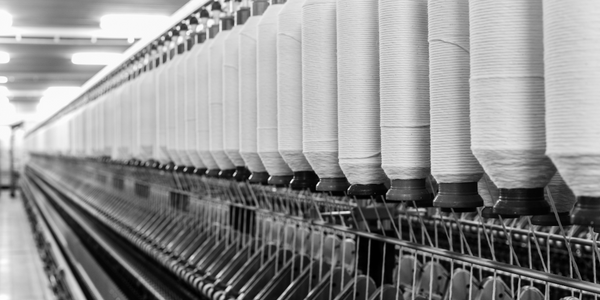技术
- 功能应用 - 仓库管理系统 (WMS)
- 传感器 - 电表
适用行业
- 服装
- 零售
适用功能
- 销售与市场营销
- 仓库和库存管理
用例
- 库存管理
- 拣选/分拣/定位
服务
- 系统集成
关于客户
Heat Transfer Warehouse 是一家位于北达科他州法戈的纯在线公司,提供用于制作装饰服装的转印设备。其产品范围从品牌运动套装、公司商品、学校和工作制服到任何其他形式的艺术装饰服装和配饰。该公司于 2010 年成立,不断发展壮大,团队规模已扩大到分布在四个地点、拥有 56 名员工的团队。它主要销售给企业,但近年来直接面向消费者的销售大幅增加,特别是在大流行期间。该公司在 Brightpearl 闪电 50 强排名中排名第 14 位,该排名是该国增长最快的在线零售企业。
挑战
Heat Transfer Warehouse 是一家传热乙烯基和热升华设备的在线零售商,在发展过程中面临着重大的运营挑战。尽管自 2010 年推出以来一直取得成功,但该公司的订购和库存管理系统却遇到了十字路口,缺乏准确性和可见性。这家总部位于北达科他州的公司因疫情导致直接面向消费者的销售额激增,需要一种解决方案来处理订单量的增加,订单量已从每月 8,000 份左右翻倍至 16,000 份。该公司还在寻找一种能够与其现有电子商务平台 BigCommerce 集成并提供实时绩效洞察和深入报告功能的系统。
解决方案
为了解决运营挑战,Heat Transfer Warehouse 转向 Brightpearl,这是一种可以与 BigCommerce 无缝集成的零售操作系统 (ROS)。实施过程非常迅速,Brightpearl 的专家顾问在不到五个月的时间内就让系统启动并运行。 Brightpearl 的 ROS 提供了一系列即插即用集成,使其能够与 BigCommerce 快速同步,并扩展到 Amazon 和 eBay 等其他在线市场。它还与该公司的运输软件 Shipstation 及其营销应用程序 Klaviyo 集成。此外,Brightpearl 强大的自动化引擎简化并自动化了订单、库存、仓库、运输和履行等耗时较长的流程,消除了手动任务并提高了库存可见性。
运营影响
数量效益

Case Study missing?
Start adding your own!
Register with your work email and create a new case study profile for your business.
相关案例.

Case Study
Fire Alarm System and Remote Monitoring Sytem
Fire alarm systems are essential in providing an early warning in the event of fire. They help to save lives and protect property whilst also fulfilling the needs of insurance companies and government departments.Fire alarm systems typically consist of several inter-linked components, such as smoke detectors, heat detector, carbon monoxide, manual call points, sounders, alarm and buzzer. The fire alarm system should give immediate information in order to prevent the fire spread and protect live and property.To get maximum protection a shoe manufacturer in Indonesia opted for a new fire alarm system to monitor 13 production sites spread over 160 hectars. Although the company had an existing fire alarm system, it could not be monitored remotely.It was essential that the new system would be able to be monitored from a central control room. It needed to be able to connect to the existing smoke detector and manual call point. Information should be easily collected and passed on to the Supervisory Control and Data Acquisition (SCADA) system. Furthermore, the system should have several features such as alarm management, auto reporting, being connected to many client computers without additional cost, and run 24/7 without fails. The company also needed a system which could be implemented without changing the architecture of the existing fire alarm system.

Case Study
IoT Applications and Upgrades in Textile Plant
At any given time, the textile company’s manufacturing facility has up to 2,000 textile carts in use. These carts are pushed from room to room, carrying materials or semi-finished products. Previously, a paper with a hand-written description was attached to each cart. This traditional method of processing made product tracking extremely difficult. Additionally, making sure that every cart of materials or semi-finished products went to its correct processing work station was also a problem. Therefore, the company desired an intelligent solution for tracking assets at their factories. They also wanted a solution that would help them collect process data so they could improve their manufacturing efficiency.

Case Study
Improving Production Line Efficiency with Ethernet Micro RTU Controller
Moxa was asked to provide a connectivity solution for one of the world's leading cosmetics companies. This multinational corporation, with retail presence in 130 countries, 23 global braches, and over 66,000 employees, sought to improve the efficiency of their production process by migrating from manual monitoring to an automatic productivity monitoring system. The production line was being monitored by ABB Real-TPI, a factory information system that offers data collection and analysis to improve plant efficiency. Due to software limitations, the customer needed an OPC server and a corresponding I/O solution to collect data from additional sensor devices for the Real-TPI system. The goal is to enable the factory information system to more thoroughly collect data from every corner of the production line. This will improve its ability to measure Overall Equipment Effectiveness (OEE) and translate into increased production efficiencies. System Requirements • Instant status updates while still consuming minimal bandwidth to relieve strain on limited factory networks • Interoperable with ABB Real-TPI • Small form factor appropriate for deployment where space is scarce • Remote software management and configuration to simplify operations

Case Study
Digital Retail Security Solutions
Sennco wanted to help its retail customers increase sales and profits by developing an innovative alarm system as opposed to conventional connected alarms that are permanently tethered to display products. These traditional security systems were cumbersome and intrusive to the customer shopping experience. Additionally, they provided no useful data or analytics.

Case Study
How Sirqul’s IoT Platform is Crafting Carrefour’s New In-Store Experiences
Carrefour Taiwan’s goal is to be completely digital by end of 2018. Out-dated manual methods for analysis and assumptions limited Carrefour’s ability to change the customer experience and were void of real-time decision-making capabilities. Rather than relying solely on sales data, assumptions, and disparate systems, Carrefour Taiwan’s CEO led an initiative to find a connected IoT solution that could give the team the ability to make real-time changes and more informed decisions. Prior to implementing, Carrefour struggled to address their conversion rates and did not have the proper insights into the customer decision-making process nor how to make an immediate impact without losing customer confidence.








